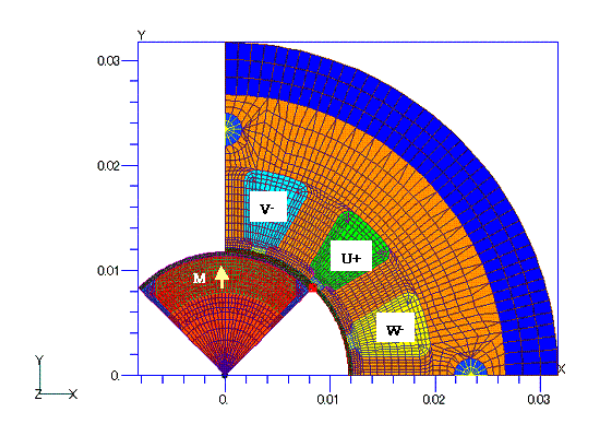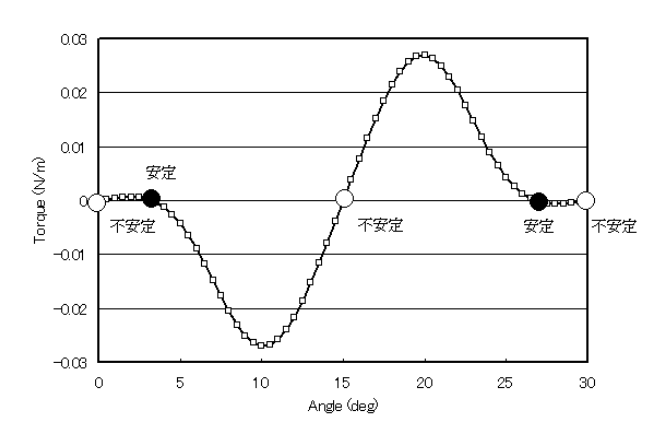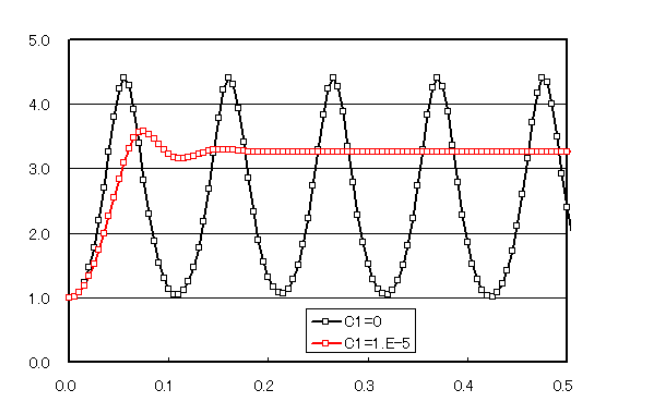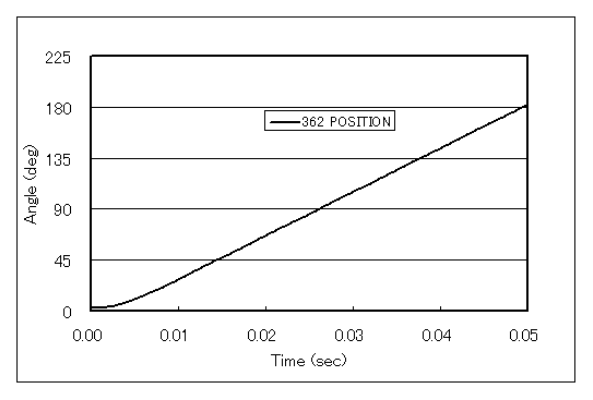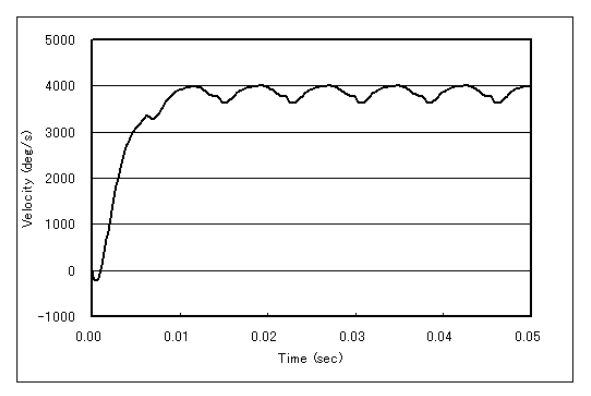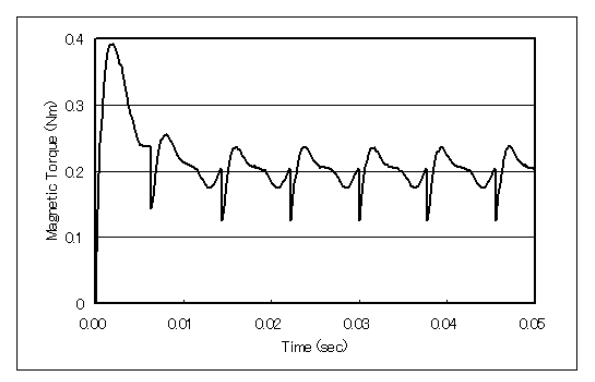Dynamic Analysis of DC Brushless Servo Motor (ON-OFF function based on SWICH position)
- TOP >
- Analysis Examples by Functions (List) >
- Dynamic Analysis of DC Brushless Servo Motor (ON-OFF function based on SWICH position)
Summary
In "Analysis of DC brushless servo motors (using switch function)" an example analysis of a brushless DC servo motor was presented. In that analysis, we solved a coupled problem with a circuit containing a switch, assuming that the rotational motion of the rotor is given as constant. In this section, we discuss an example of a coupled motion problem in which the rotational motion itself is also taken into account. In addition, since EMSolution ver10.1, we have added a function to turn ON/OFF the SWITCH of the Network module in relation to its position.
Explanation
To perform this analysis, the Dynamic and Network modules of EMSolution are required.
The analysis model is shown in Fig. 1. This model is the one used in "Analysis of a Brushless DC Servo Motor (using switch function)", and is a two-dimensional nonlinear analysis. The boundary condition is set to a 4-fold counter-rotating periodic boundary condition.
First, we consider the position where the rotor is at rest with zero winding current. If no external torque is applied to the rotor, the rotor is considered to be at rest at the position where the electromagnetic force torque (cogging torque) is zero. The angle dependence of the cogging torque is shown in Fig. 2. In this document, the position in Fig. 1 is assumed to be zero and clockwise is positive; note that the position and torque are shown inverted because EMSolution’s angular forward direction is counterclockwise. From Fig. 2, we can see that the stable equilibrium point (the angle at which the torque crosses zero from positive to negative) is in the neighborhood of ±3 degrees, which is a stable static position. This position is determined by the motion of the rotor.
The initial angle of the rotor is 1 degree, and a coupled analysis of the motion is performed. Fig. 3 shows the resulting angular variation with no frictional force on the rotor (C1=0) and with a frictional force proportional to the rotation speed ($C1=1.E-5 (Nm/(deg/s)$). In the absence of friction, the rotor is oscillating around a stable equilibrium point. No friction means no loss, so no damping is observed. With friction, convergence to the equilibrium point and rest can be seen. The stationary angle of 3.26 degrees corresponds to the stable equilibrium point shown in Fig. 2.
Next, the winding is excited with the rotor at the equilibrium stability point to simulate the starting process of the motor. The circuit system is the same as that used in " Analysis of DC brushless servo motors (using switch function)”. However, in "Analysis of DC brushless servo motors (using switch function)" the rotational speed is assumed to be constant, so the ON-OFF time of the switch is also input accordingly. However, in the initial stage of this analysis, the ON-OFF time cannot be given as an input because the speed changes from moment to moment. Therefore, a new function has been added to EMSolution to give the ON-OFF time of the switch with respect to the position, and this function is used.
In the analysis, the moment of inertia of the rotor is assumed to be 10-5 kg-m2 and a constant torque of 0.2 Nm is applied externally. The analysis starts from a stationary state with an initial position of 3.27 degrees. The position, velocity, and electromagnetic torque obtained from the analysis are shown in Figs. 4, 5, and 6, and reach a steady state in about $10 ms$, yielding a rotational speed of about $3800 deg/s (630 rpm)$. This result is consistent with the torque of about $0.2 Nm$ at $600 rpm$ analyzed in "Analysis of DC brushless servo motors (using switch function)". In addition, in the steady state, the speed fluctuation is about 10%.
As described above, by coupling the motions, various types of analysis, such as during motor startup, transient, or failure, can be performed. In addition to switches, the motion analysis can be performed by combining the circuit system elements of Network modules of various springs and dampers. Currently, only switches have position-dependent characteristics among the circuit system elements, but in principle, other elements can also have position- and velocity-dependent characteristics. If necessary, we would like to add such elements in the future, and we would be happy to receive your requests.
The rest of this page is for members only.
Analysis Examples by Functions
Analysis of permanent magnet motors
- Application of COIL to Motor Windings
- Impact Load Analysis of Brushless DC Servo Motor
- Dynamic Analysis of DC Brushless Servo Motor (ON-OFF function based on SWICH position)
- Analysis of DC brushless servo motors (using switch function)
- Three-Dimensional Cogging Torque Analysis for Permanent Magnet Motors
- Two-Dimensional Cogging Torque Analysis for Permanent Magnet Motors
©2020 Science Solutions International Laboratory, Inc.
All Rights reserved.


